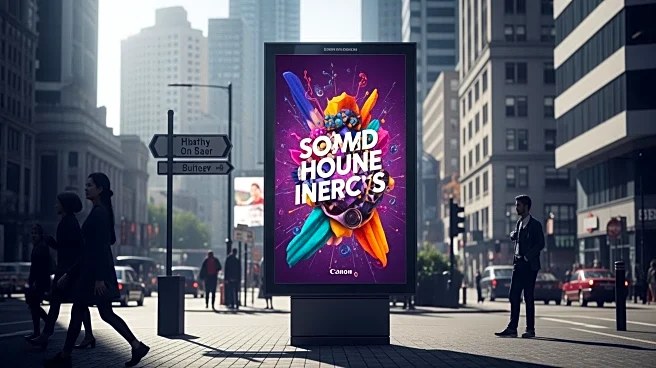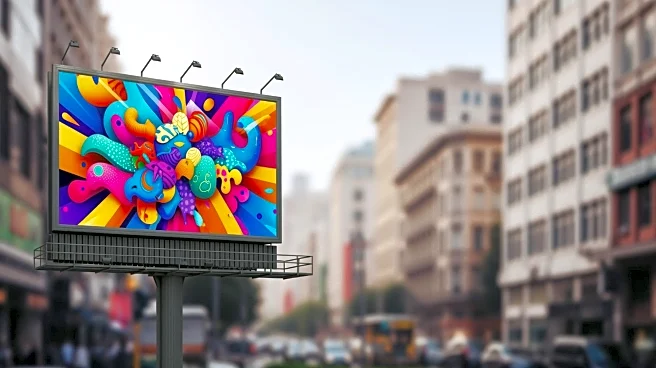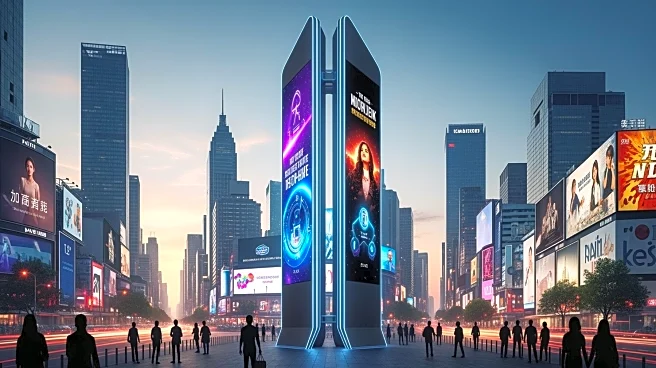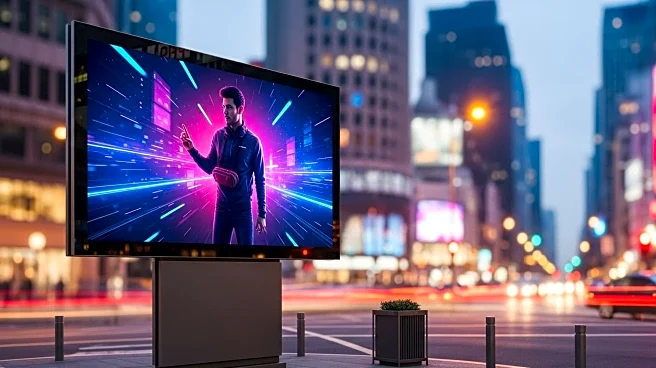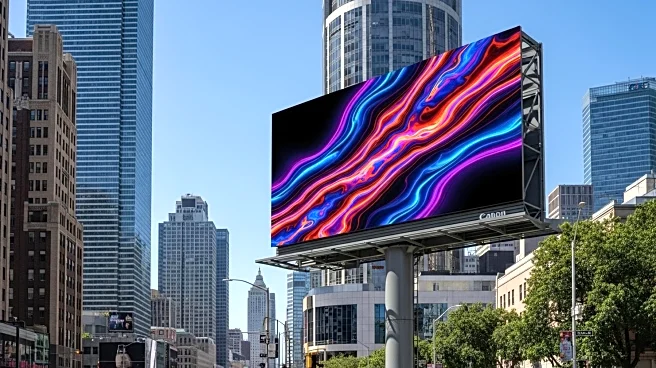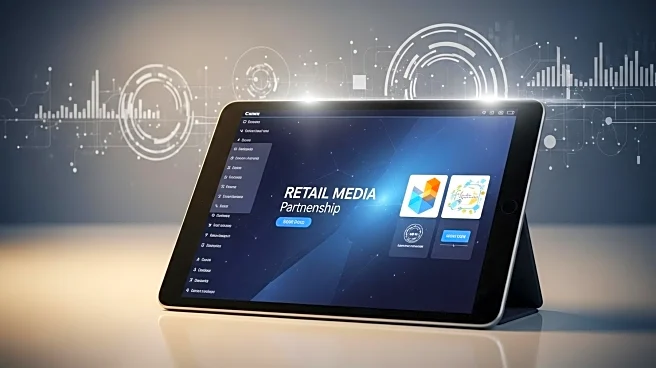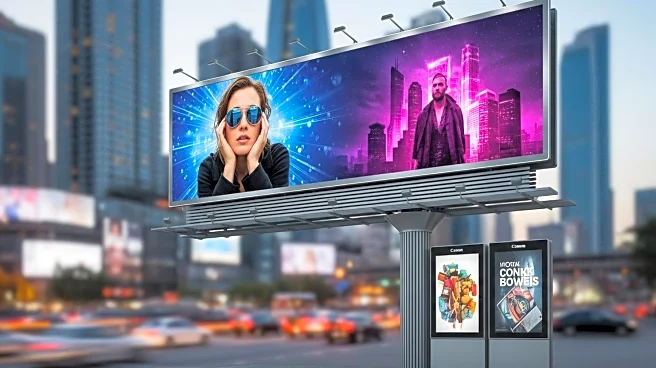What's Happening?
Out-of-home (OOH) advertising is evolving beyond traditional billboards and posters, integrating technology to create more engaging and interactive experiences. The use of digital screens, QR codes, and live
cameras is transforming passive advertising into active engagement opportunities. Brands are leveraging these technologies to tailor messages based on real-time factors such as weather, traffic, and trending topics. Examples include Red Bull's collaboration with Tetris, turning outdoor screens into interactive games, and Shake Shack's 'White Truffle Hunt' using QR codes for virtual prize hunts. These innovations aim to make advertisements feel more personal and relevant, encouraging consumers to interact and share their experiences.
Why It's Important?
The shift in OOH advertising represents a significant change in how brands connect with consumers. By making ads more interactive and personalized, companies can increase consumer engagement and brand loyalty. This approach not only captures attention but also encourages social media sharing, amplifying the reach and impact of campaigns. As digital advertising faces challenges with ad fatigue and privacy concerns, OOH offers a refreshing alternative that complements online strategies. Brands that successfully integrate creativity and technology in OOH advertising can create memorable experiences that resonate with audiences, potentially leading to increased sales and brand recognition.
What's Next?
The future of OOH advertising will likely see further integration of advanced technologies such as augmented reality and artificial intelligence to enhance consumer interaction. Brands may continue to experiment with creative formats and real-time data to deliver more personalized and impactful messages. As the industry evolves, advertisers will need to balance innovation with privacy considerations, ensuring that consumer data is used responsibly. Stakeholders, including marketers and technology developers, will play a crucial role in shaping the direction of OOH advertising, potentially influencing broader marketing strategies across industries.
Beyond the Headlines
The evolution of OOH advertising raises questions about the ethical use of technology in marketing. As ads become more personalized, concerns about data privacy and consumer consent may arise. Additionally, the increased use of technology in public spaces could lead to debates about the commercialization of urban environments. Long-term, the integration of technology in OOH advertising could influence cultural perceptions of advertising, shifting expectations for how brands communicate with consumers.


